Furukawa Festival (April 19-20): Witness Hida's Cultural Heritage

Held annually on April 19-20, Hida's Furukawa Festival showcases local crafts, rituals, and performing arts. Learn how to enjoy the festival, food, hotels, and event highlights.
Furukawa Festival: A Must-See Spring Tradition in Hida
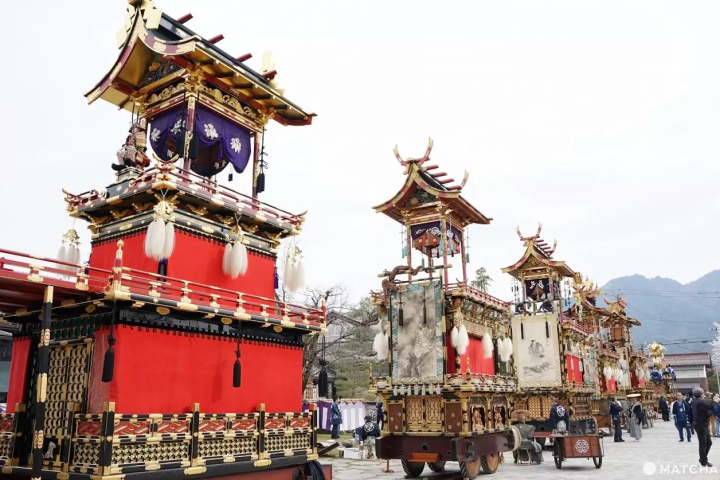
The Furukawa Festival, a cherished spring tradition for over 300 years, takes place annually on April 19 and 20 in the Furukawa district of Hida, just 17 minutes north of Takayama by train.
Designated as UNESCO Intangible Cultural Heritage, the festival features a parade of intricately carved traditional floats.
During my first visit to Hida Furukawa in autumn, the townspeople often mentioned "the festival," which seemed to be an invisible presence, a constant part of daily life. There is even a dedicated museum across from the city hall!
I felt compelled to witness this event and was gratefully given the chance to attend it in April 2025. The following account is based on my experience of the festival--two unforgettable days of immersion into Hida's crafts and spiritual traditions.
Table of Contents
1. The Furukawa Festival's Cultural Significance
2. Furukawa Festival Highlights: The Main Events
- Mikoshi Procession (April 19 - 20)
- Okoshi Daiko: Evening of April 19
- Yatai Float Parade: April 20
3. How to Enjoy the Furukawa Festival: Book Your Hotel Early!
- Hida Furukawa Accommodation: Hotels for the Festival
- Furukawa Festival Food: Dining Options and Japanese Sake
4. Visit the Hida Furukawa Festival Exhibition Hall
The Furukawa Festival's Cultural Significance

Across cultures, festivals offer a break from routine, heralding the start of a new life cycle. You can certainly feel this at the Furukawa Festival in Hida, held annually on April 19 and 20, coinciding with early spring.
For the people of Hida, the Furukawa Festival signifies a new beginning, holding importance akin to the New Year. Below, we explore what makes this festival so special.
Featuring the Crafts of Hida
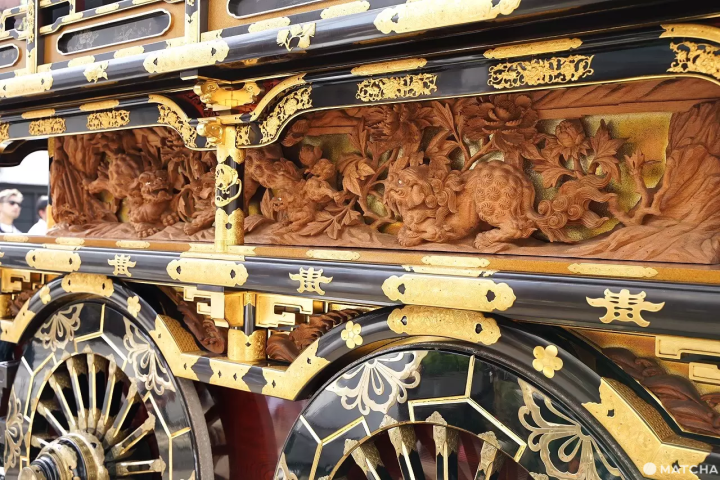
The Hida region boasts a long-standing reputation for highly skilled craftsmanship, particularly in carpentry and wood carving. During the periods when Nara and Kyoto served as Japan's capitals, teams of Hida craftsmen built many of their temples and palaces.
The Yatai festival floats and their intricate wood carvings are examples of Hida local craftsmanship. Some of these ten distinct floats are over a century old, each adorned with beautiful carvings rich in symbolism.
Outside of the festival dates, three of these floats are on display year-round at the Hida Furukawa Festival Exhibition Hall. To further explore the crafts of Hida, visit the Hida Takumi Carpentry Museum, which is conveniently located adjacent to the Festival Square.
A 300-Year History
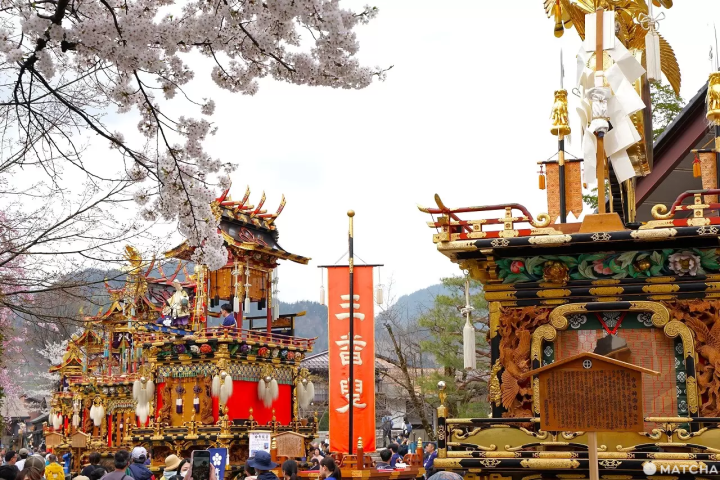
Historical records first mention the Furukawa Festival during the Genroku period (1688-1704). While the festival's content has evolved, its magnificent floats are themselves quite old, with the earliest dating back approximately 100 years and the others built subsequently.
A devastating fire in Furukawa in 1904 destroyed one of the floats, the Sambaso float, which traditionally appears second in the parade. To preserve its memory, the Sambaso float was only partially reconstructed.
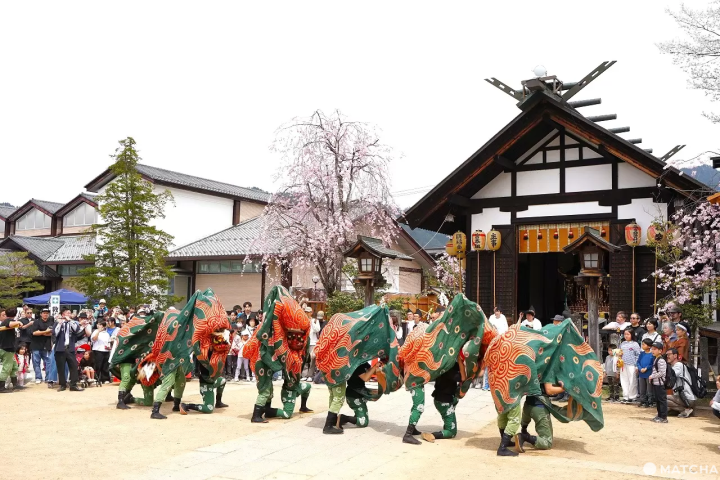
The festival floats serve as small, mobile stages for traditional Japanese performing arts. These include festival music (hayashi) accompanying kagura dances, karakuri (puppet theater) enacting Noh plays, and kodomo kabuki, a children's kabuki performance.
Essentially, the Furukawa Festival offers a condensed introduction to Japan's traditional performing arts, which originally developed as offerings to the gods. This concentration of cultural expressions makes the festival a treasure trove of Japanese culture and history.
A Symbol of Community Spirit
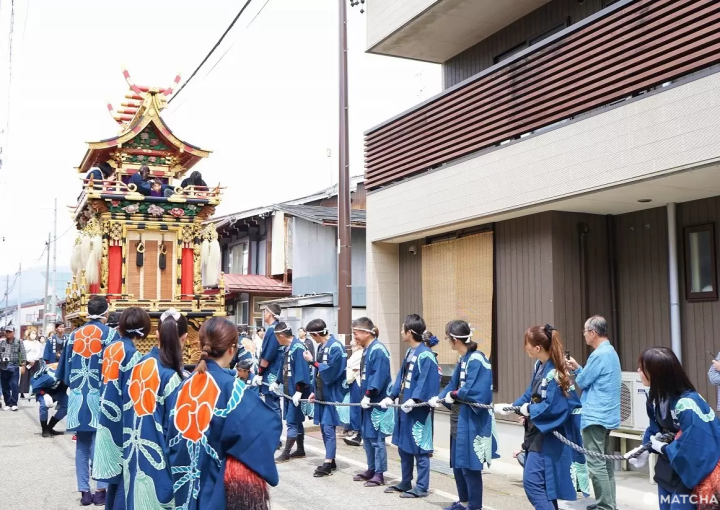
The town of Furukawa is designed to accommodate this significant event, which is deeply ingrained in the lives of its citizens. Every household actively participates during the two festival days.
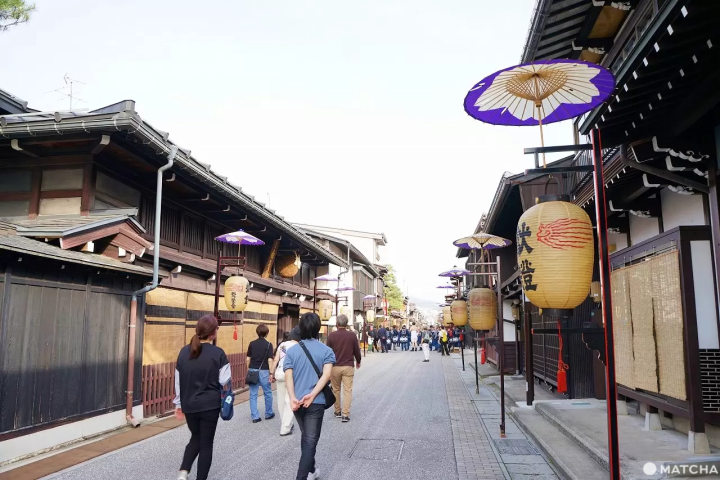
You'll notice paper lanterns adorning the entrance of each home. The streets have indentations in the cement to hold these lantern poles. Every household uses them to install their lanterns during the two festival days.
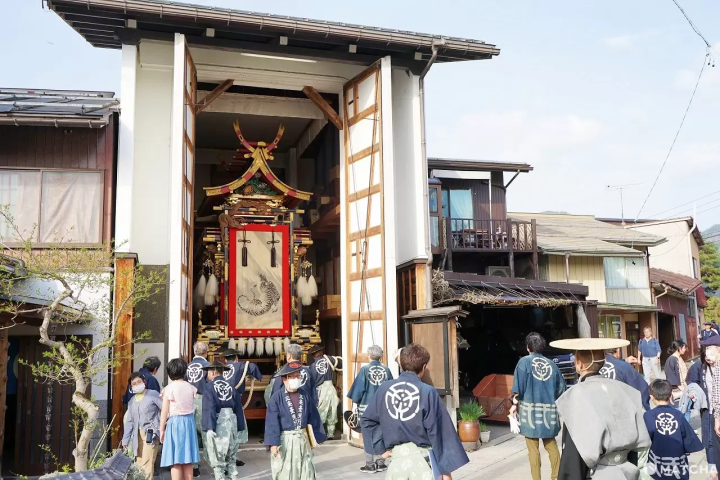
The town's young men typically participate in the lively Okoshi Daiko event on the evening of April 19. Other residents assist with moving the festival floats from their storage and preparing them for the parade. They also carefully return the floats to storage after the festival.
Each float represents a specific district within the town, and the district's residents are responsible for its upkeep, the performances held on it, and its maneuvering during the parade.
Much like the way they look out for one another during the harsh winter months, the people of Furukawa work together to bring this festival to life. It stands as a testament to their enduring community spirit.
Furukawa Festival Highlights: The Main Events
The three key highlights not to be missed at the Furukawa Festival are: the Mikoshi (portable shrine) Procession, taking place on both April 19 and 20; the Okoshi Daiko (large drum) event, held on the evening of April 19; and the Yatai float parade on April 20.
We provide details about each of these events and their significance below.
Mikoshi Procession (April 19 - 20)
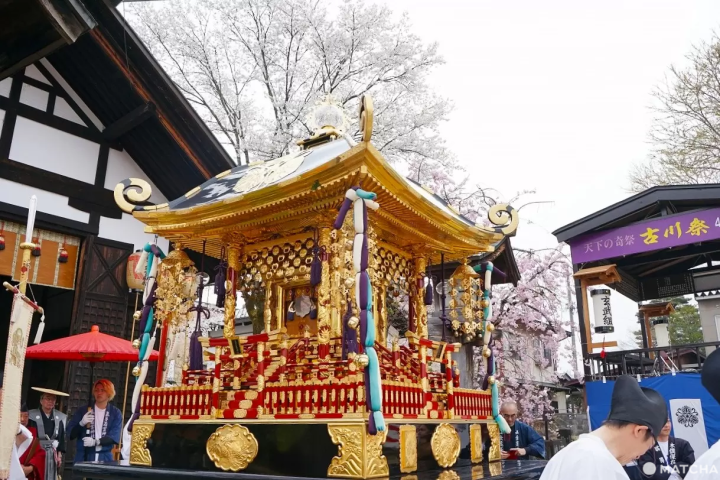
Like many traditional Japanese festivals, the Furukawa Festival centers around the celebration of a local shrine – in this instance, the Keta Wakamiya Shrine.
On April 19, following a ritual performed by shrine priests, the deity of Keta Wakamiya Shrine is transferred to a portable shrine (mikoshi) and paraded through town to bestow blessings upon the residents. The mikoshi is housed overnight at the Otabisho, a structure in the Festival Square.
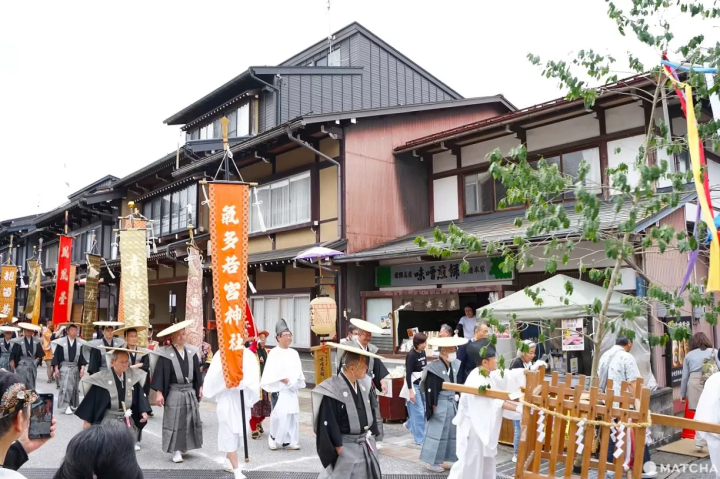
The Mikoshi Procession continues on April 20 at 9:00 AM, visiting the remaining town districts. Accompanying the portable shrine are traditional musicians, shrine priests and maidens, and people carrying flags representing each of the Yatai floats and the town districts they symbolize.
The portable shrine returns to the Festival Square around noon, where kagura music are performed in its honor. Afterward, the mikoshi is returned to Keta Wakamiya Shrine.
The collective joy, performances, and offerings of vegetables and sake are all dedicated to the deity. The Mikoshi Procession is a ritual symbolizing the bond between the deity of Keta Wakamiya Shrine and the residents under its protection.
Okoshi Daiko: Evening of April 19
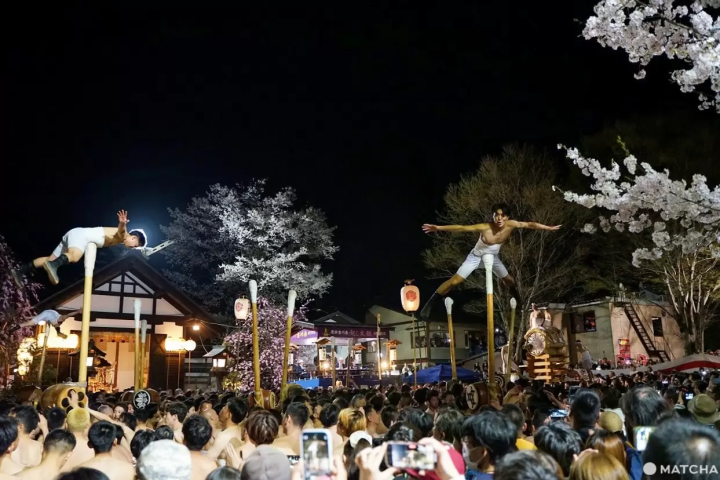
The Okoshi Daiko event, beginning at 8:00 PM on April 19 in the Festival Square, serves as a lively reminder to the residents that the main festival day is approaching and that they should all gather to celebrate.
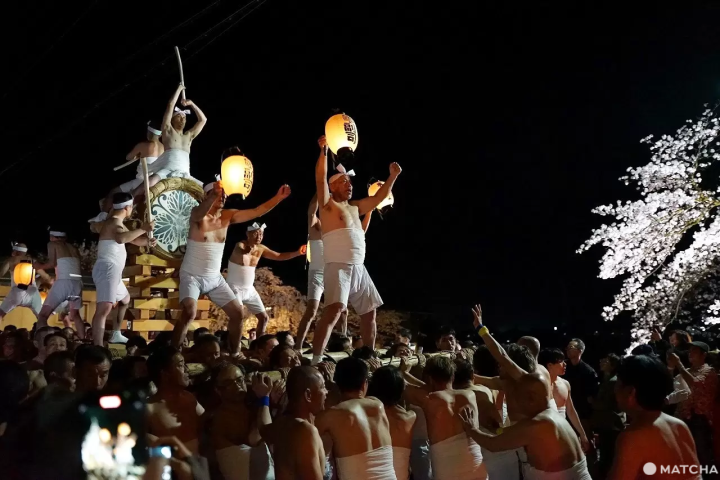
"Daiko" refers to the large Japanese festival drums. During this event, a particularly large daiko is struck rhythmically by two men who ride the drum tied together for safety. This massive drum is carried on the shoulders of local men throughout the town, rousing everyone for the festivities.
Simultaneously, twelve groups of men carry smaller drums called tsuke-daiko. These groups energetically compete to have their tsuke-daiko positioned closest to the large Daiko, as being near it is considered a great honor.
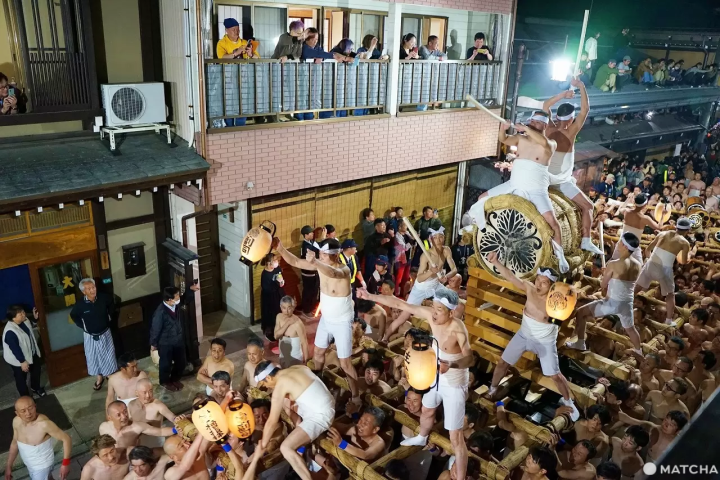
The sheer energy and exhilarating chaos of this procession, which extends beyond midnight, are difficult to convey in words – it's an event best witnessed directly! The sight of Furukawa residents perched on rooftops for a better view of these men vying for honor during the Okoshi Daiko parade speaks volumes about its captivating power.
The Okoshi Daiko parade follows a set route, and festival visitors can obtain a map indicating the approximate location of the large drum at various times throughout the evening.
You can either follow the parade's progress or wait for it at a specific location marked on the map. Alternatively, consider asking the friendly locals if you can join them at their second-floor windows, balconies, or rooftops for an enhanced view.
Yatai Float Parade: April 20
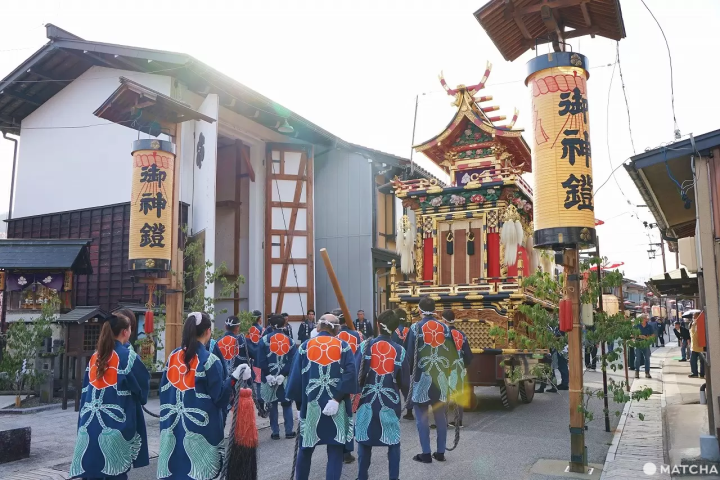
On April 19, the Yatai festival floats are taken out of their respective storehouses for the "shigakusai," the festival preparation.
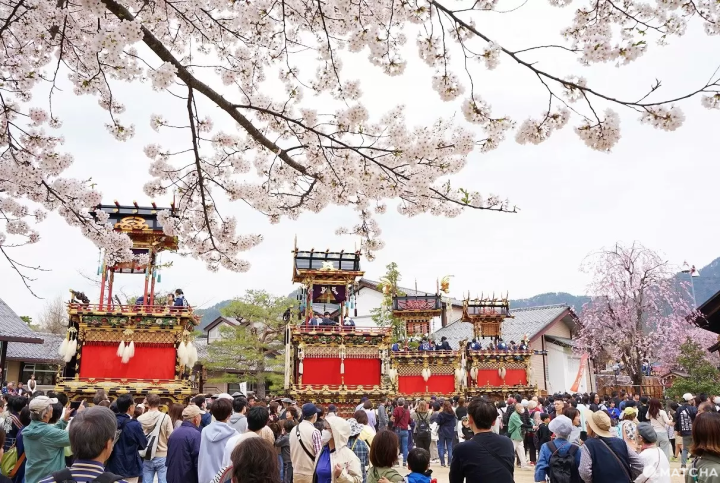
On April 20, you can see all the floats lined up in the Festival Square starting at 8:00 AM. After the Mikoshi Procession departs at 9:00, each Yatai float presents a program of performances until noon.
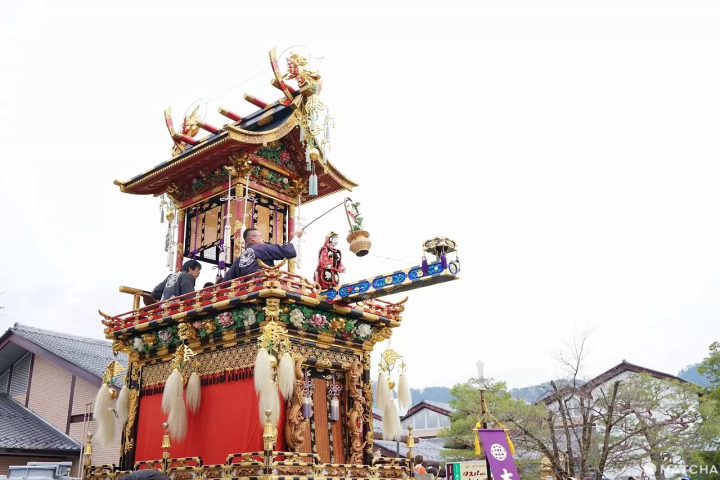
Visit the first Yatai to see kagura and lion dances, and head to the third for a karakuri puppet performance of "Tsurukame," an auspicious Noh play featuring the crane and turtle, symbols of longevity. Another Yatai showcases a karakuri puppet performance of "Shakkyo," a Noh play about a lion playing among peonies, another auspicious symbol in Japanese culture.
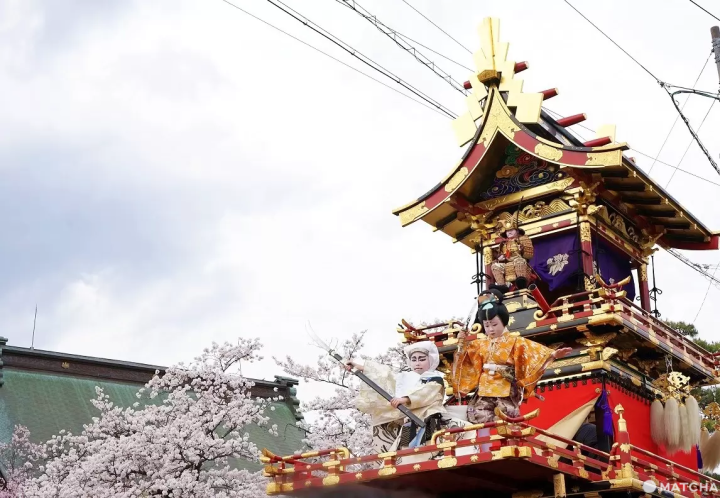
The Byakkotai float is particularly popular, featuring a stage for children's kabuki. Local children, dressed in the kabuki costumes of the heroes Yoshitsune and Benkei, reenact the legendary tale of their first encounter and decision to fight alongside each other after testing their strength in battle. The children's charming gestures and the distinctive sound effects of kabuki make this performance a highlight of the day!
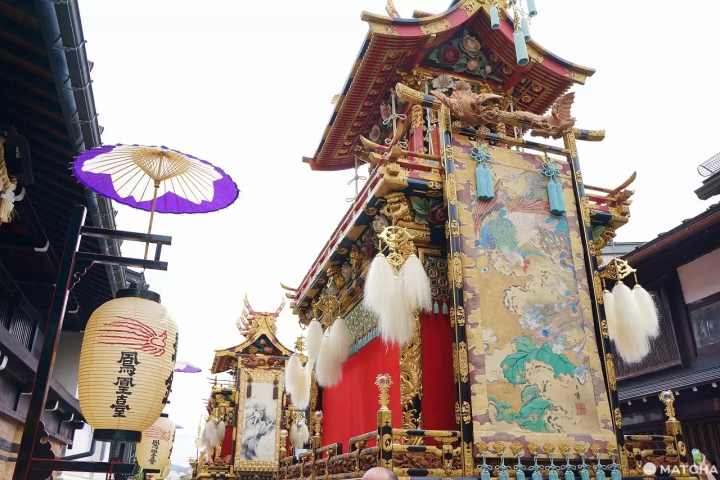
The Yatai floats are lined up in order and paraded through the city until the afternoon. As you observe the Yatai floats, you'll be struck by the ingenuity of their design. Since they are pulled by people and lack steering, a clever mechanism is employed at intersections: the rear wheels are lifted using levers, and a perpendicular auxiliary wheel is lowered; this allows the entire float to change direction.
How to Enjoy the Furukawa Festival: Book Your Hotel Early!
While a day trip to the Furukawa Festival from Takayama or Toyama is feasible, you would miss the Okoshi Daiko event on April 19 – a truly authentic and energetic display of male residents vying for honor.
We recommend staying overnight to fully enjoy both festival days. If your schedule allows, consider an additional day to appreciate the town's tranquility as it transitions from the festival atmosphere back to everyday life.
Please note that the Furukawa Festival is very popular, and accommodations in town, especially for April 19 and 20, often book up completely, sometimes even three years in advance! Therefore, we strongly advise booking your lodging as early as possible.
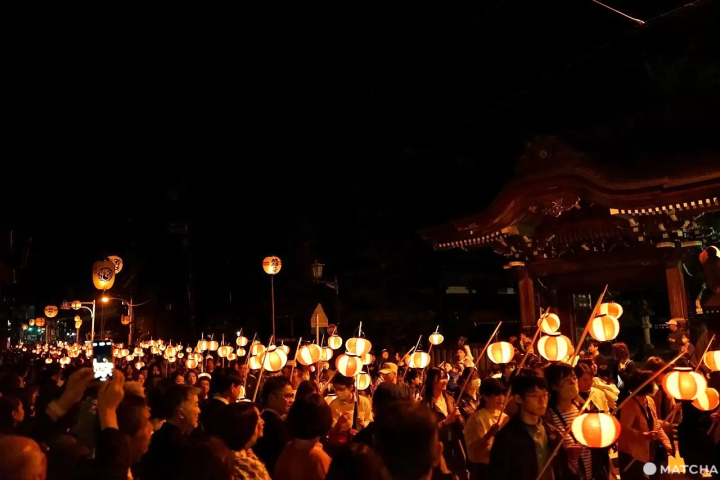
While simply observing the Okoshi Daiko from a safe vantage point is enjoyable, you can also join the lantern parade that advances in front of the large drum. Inquire at the Hida Tourism Association for details on how to participate; the lantern parade is open to everyone!
Hida Furukawa Accommodation: Hotels for the Festival
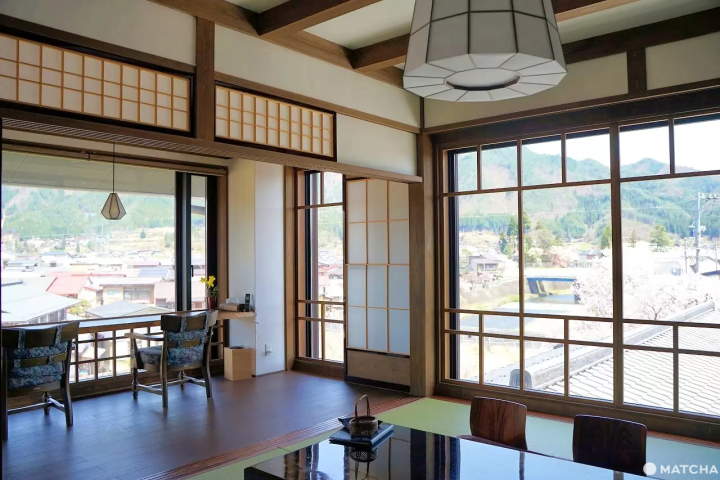
Our top recommendation is Yatsusankan, a luxurious hot spring ryokan situated by the river. This establishment has a rich history dating back to the Meiji period (1868-1912) and has been updated with modern amenities for today's travelers.
Beyond its spacious and elegant rooms that embody Japanese hospitality, a stay here in April offers the unique opportunity to witness rehearsals for the lion dances and karakuri performed at the Furukawa Festival.
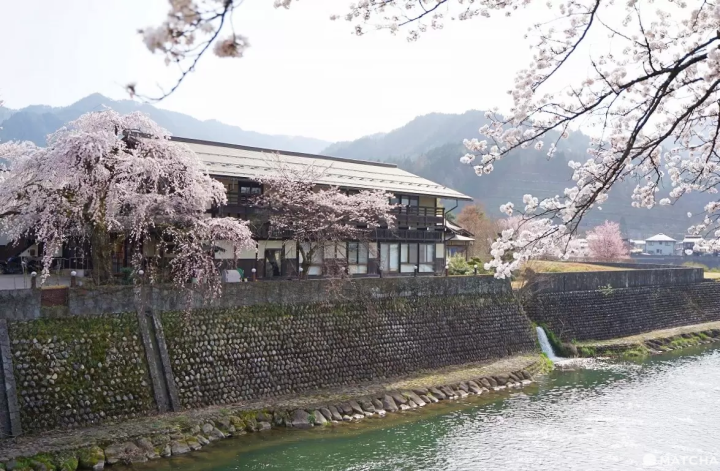
Busuitei is another excellent option, a hot spring ryokan well-known for its health-conscious cuisine incorporating medicinal herbs.
We also recommend the smaller, family-run ryokan inns that line the streets of Furukawa, such as Notoya. These offer a chance to experience the genuine warmth and hospitality of the locals, plus prime second-floor views of the energetic Okoshi Daiko procession.
Furukawa Festival Food: Dining Options and Japanese Sake
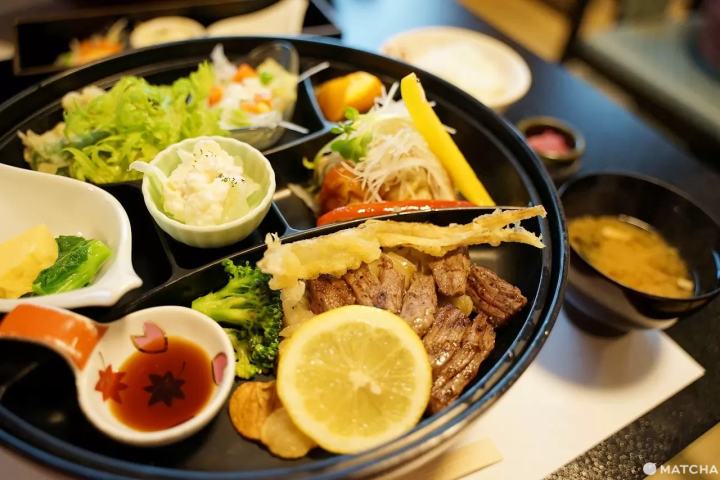
Despite the busy festival, Furukawa's restaurants and cafes remain open, though you may experience wait times. For lunch or dinner, consider Ajidokoro Furukawa, which offers traditional dishes, Busuitei OHAKO for healthy set meals, or Maeda for Hida beef cuisine.
Alternatively, food stalls throughout town during the two festival days offer convenient snacks and drinks. Find them near Hida-Furukawa Station, the Festival Square, and the plaza by the Tourist Information Center.
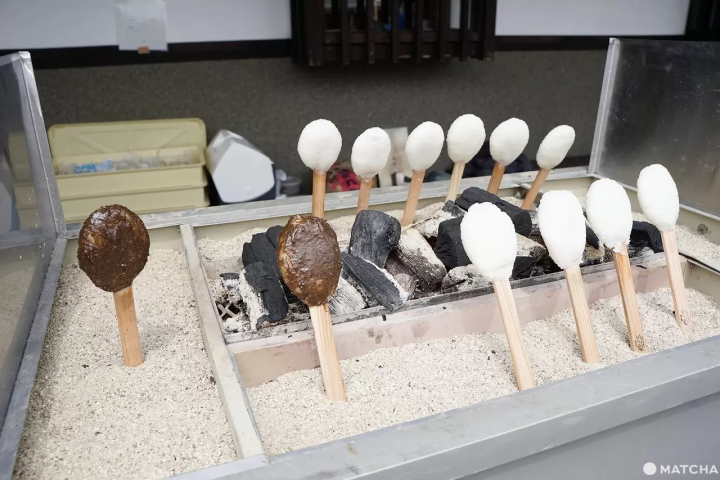
Popular treats include baked Gohei-mochi with egoma (wild sesame) and hearty Hida beef croquettes. For drinks, sample Hida's refreshing craft beer.
On the evening of April 19, visitors can also enjoy free Japanese sake in the Festival Square.
Furukawa has two sake breweries: Watanabe Sake Brewery and Kaba Sake Brewery. Notably, two bottles of sake – one iconic brew from each – are always offered to the deity during the festival. You can purchase local sake as a souvenir from Goto Liquor Store, a beverage store near the Festival Square.
Visit the Hida Furukawa Festival Exhibition Hall
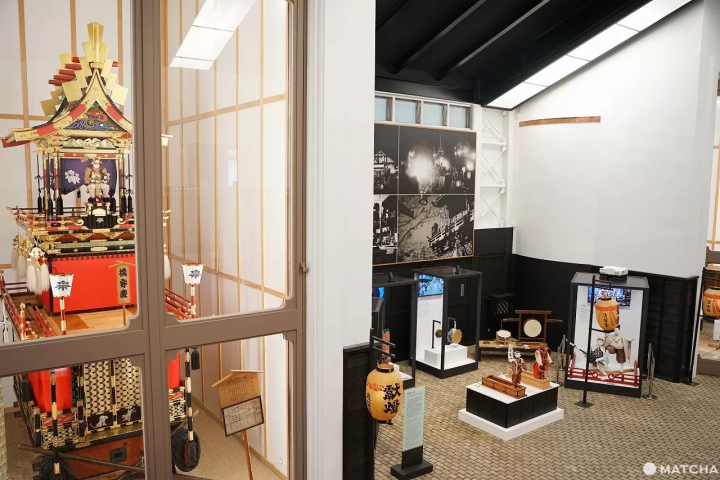
If you can't attend the festival itself, visit the Hida Furukawa Festival Exhibition Hall. The documentary shown every 20 minutes on the large screen offers an insightful introduction to the Furukawa Festival and its significance.
The hall displays three of the magnificent Yatai floats, allowing visitors to examine their intricate carvings and decorations up close.
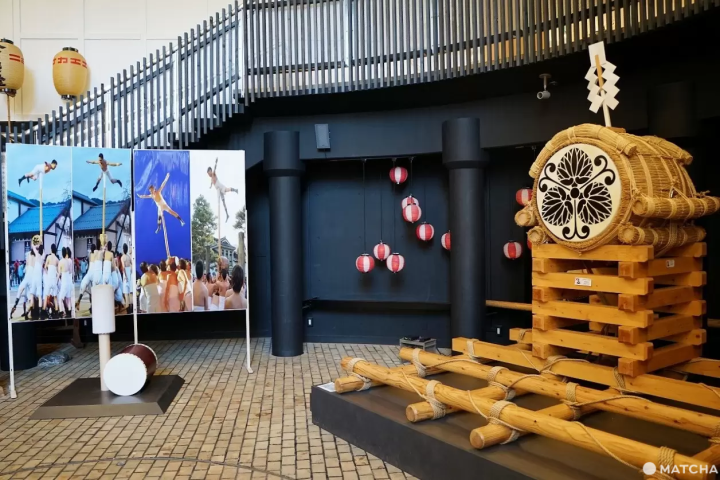
Visitors can also enjoy interactive displays, such as maneuvering a karakuri puppet or practicing the "tombo" acrobatics that male residents do during the Okoshi Daiko event. The festival hall is a must-visit in Hida Furukawa!
Experience Japanese Tradition at the Furukawa Festival
Experiencing the Furukawa Festival over two days reveals the true meaning of tradition.
The residents of Furukawa inherit an invisible bond expressed through the festival; they may not fully remember its origins, but feel compelled to preserve it. It embodies their identity, linking them to their ancestors and passing a priceless, intangible heritage to future generations.
The festival is a powerful reflection of Japanese cultural roots, coming alive through community cooperation expressed in crafts, music, and traditional dances.
Ramona, English content editor at MATCHA since 2016, has been practicing ikebana flower arrangement (Ikenobo School) and tea ceremony (Omote Senke) since 2012. She arrived in Japan in 2012 as a graduate student with a focus on Japanese literature and performing arts. As a travel editor and writer, Ramona has visited and documented 40 of Japan's prefectures with a focus on art, history, traditional Japanese crafts, and performing arts.


























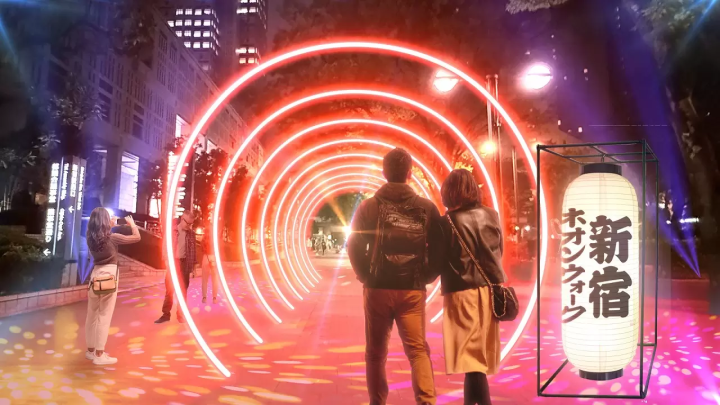
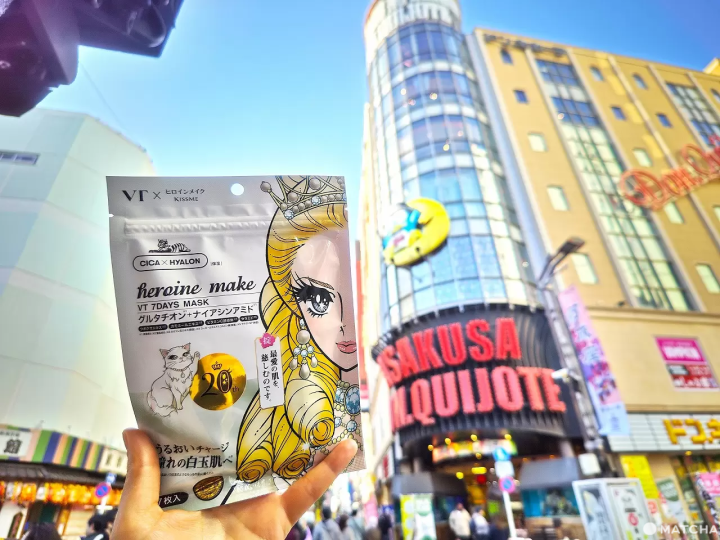
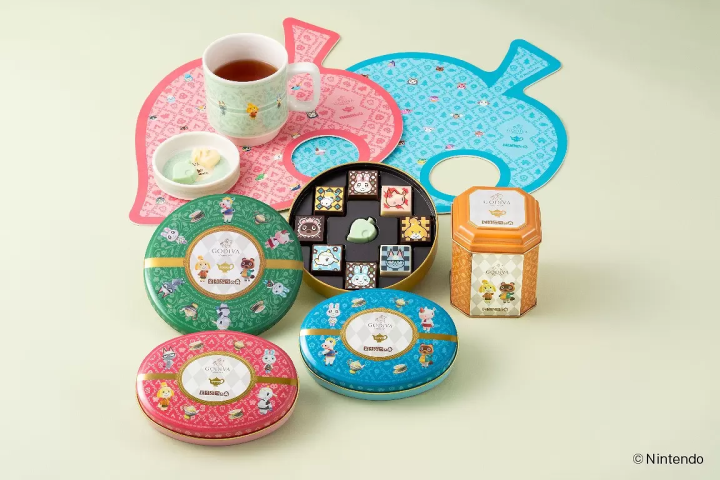
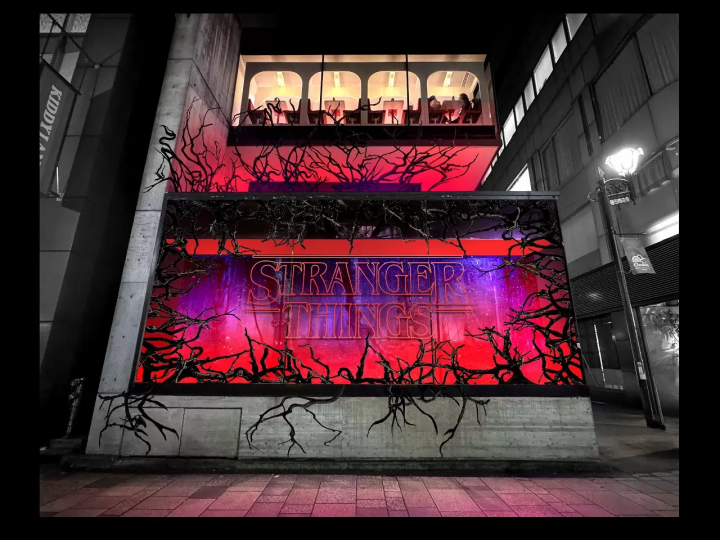
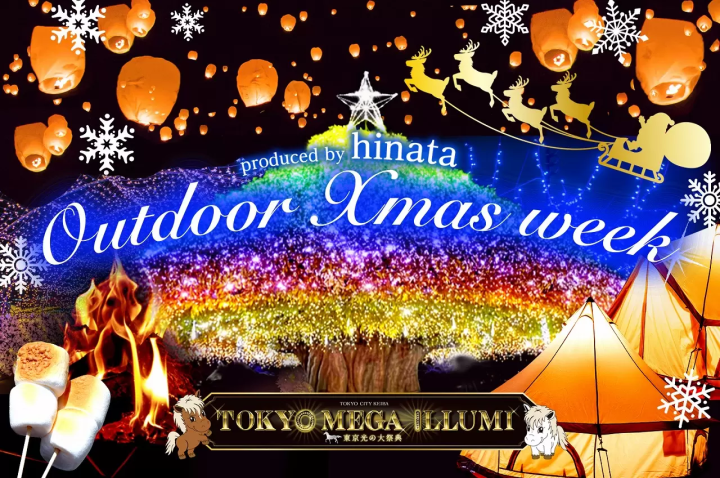
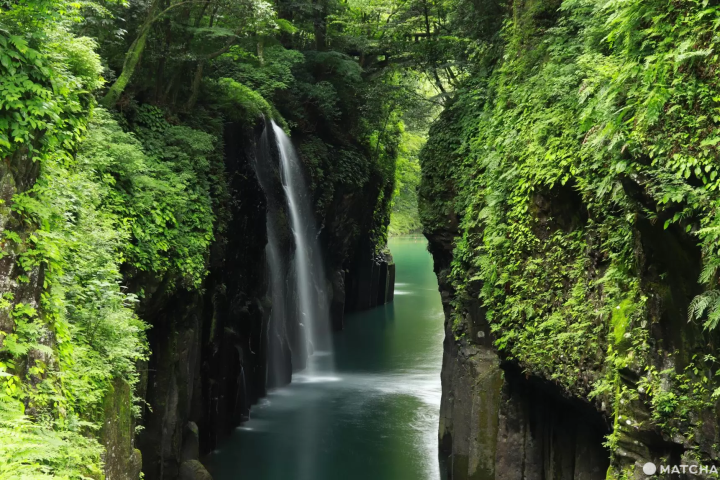




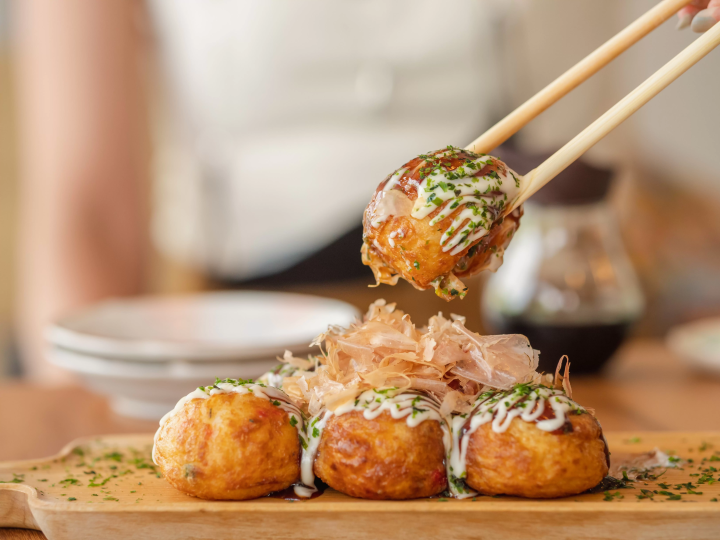
![[2026 Edition] FORMUAL 1 JAPANESE GRAND PRIX Information](https://resources.matcha-jp.com/resize/720x2000/2025/10/05-245984.webp)

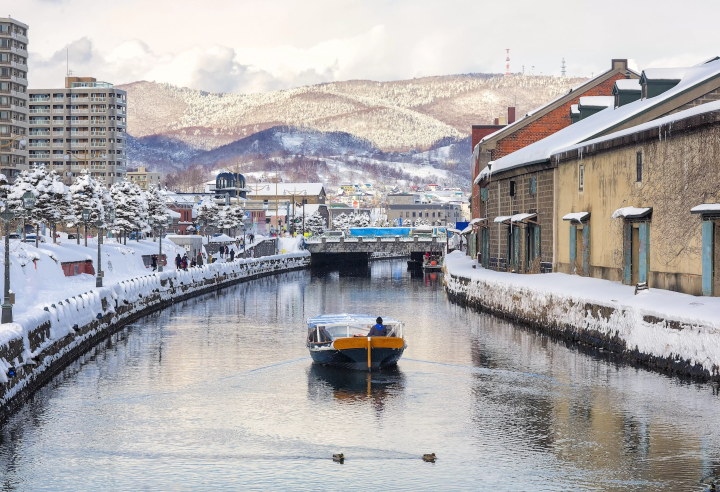
![[2025 Update] Namba's spectacular illuminations! "Namba Hikari Tabi" with approximately 1 million shining lights](https://resources.matcha-jp.com/resize/720x2000/2025/12/12-252825.webp)